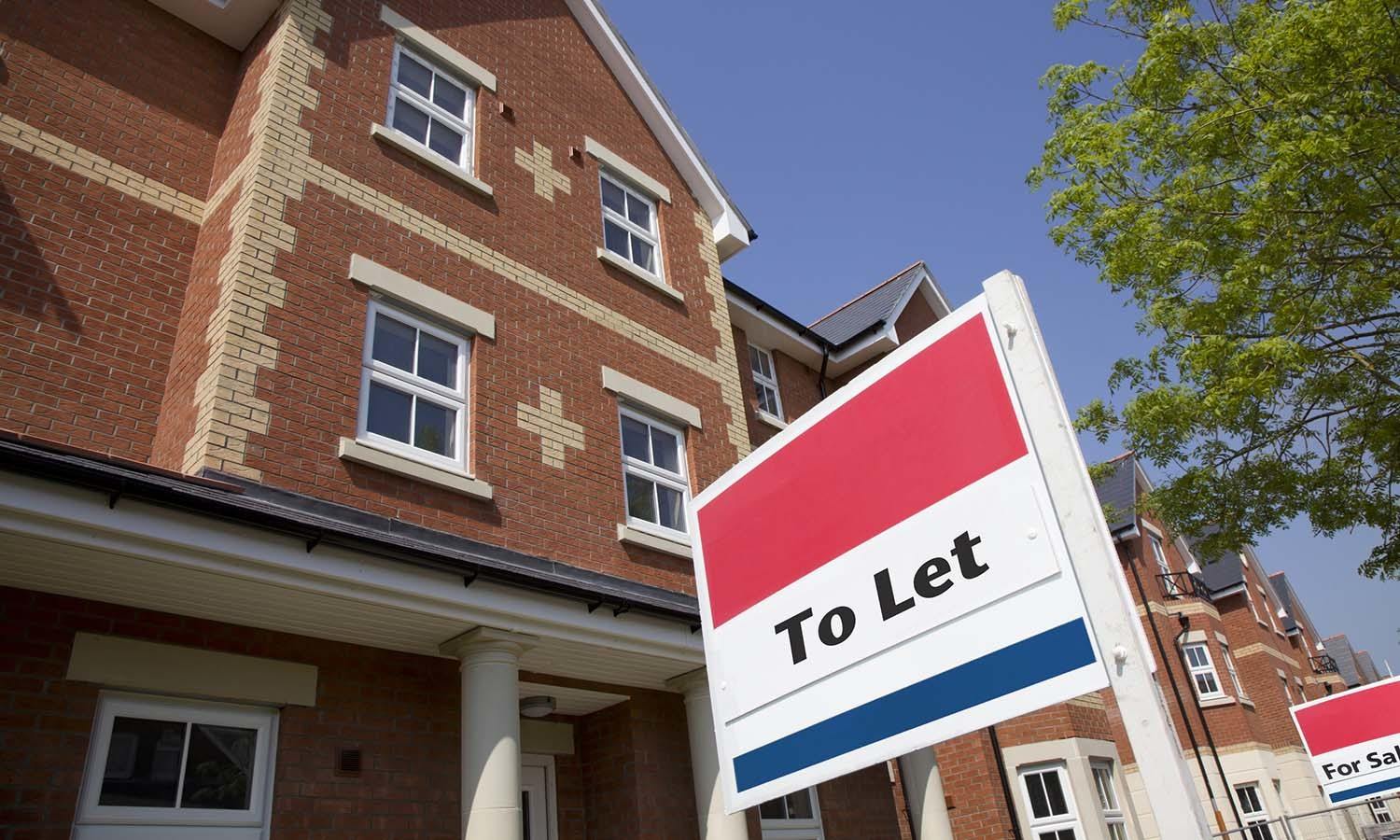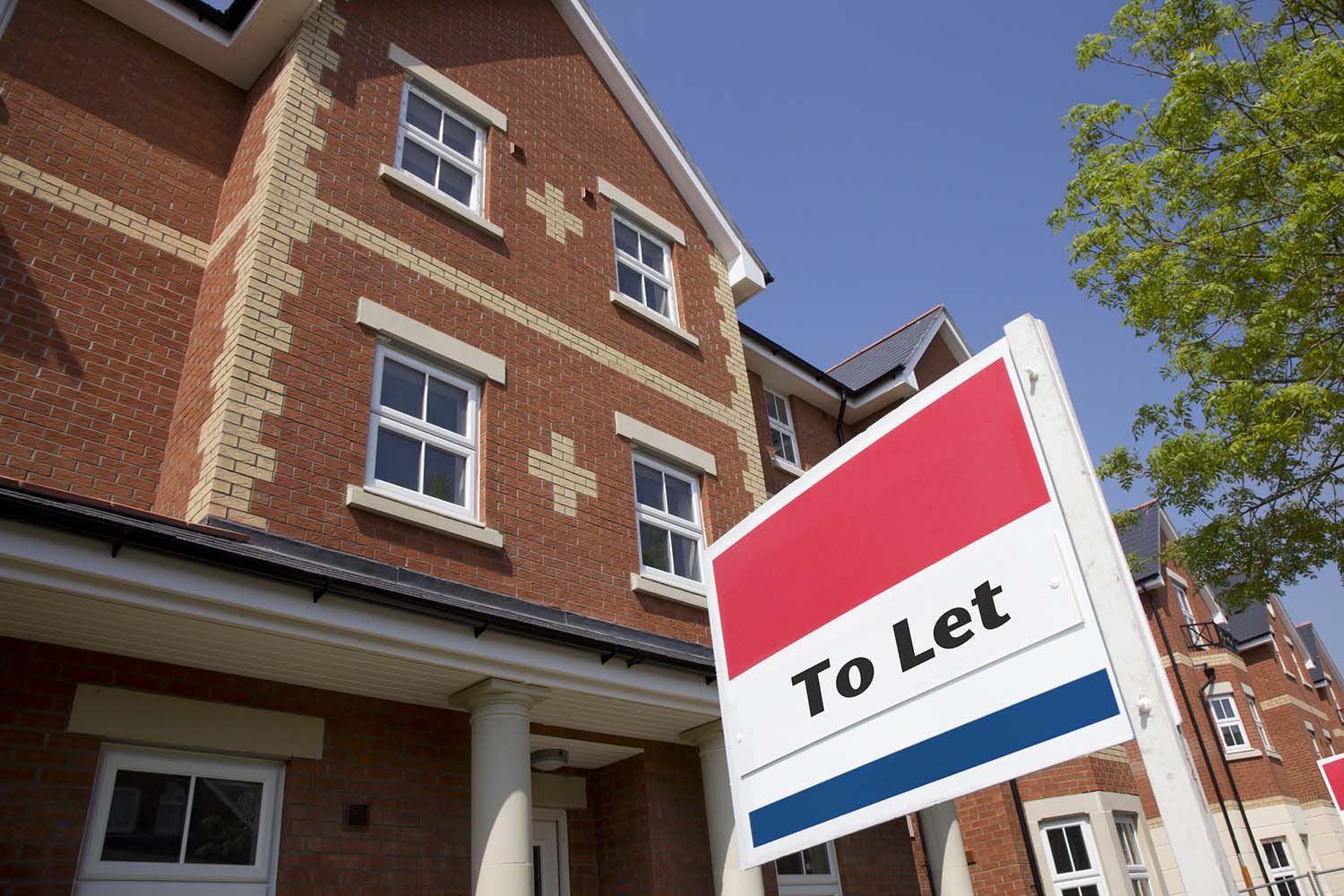International Women’s Day: Celebrating the progress of women in property - Total Landlord Insurance
International Women's Day spotlights the progress and challenges of women in traditionally male-dominated fields like property.

The ultimate landlord guide to choosing a letting agent - the latest from the Total Landlord Insurance Knowledge Centre

Advice on taxes for UK landlords: the complete guide for 2024/25 - the latest from the Total Landlord Insurance Knowledge Centre
.png)
Spring maintenance for landlords - Read more on Total Landlord Insurance Knowledge Centre!

Chancellor's budget brings tax cuts, VAT & child benefit rises but cuts for property investors. Key updates for landlords detailed.

A comprehensive commercial property guide to responsibilities and benefits for landlords - the latest from the Total Landlord Knowledge Centre!

Who is responsible for the garden maintenance of a rented property? - the latest from Total Landlord Insurance Knowledge Centre

Legislation for landlords: Everything you need to know - the latest from the Total Landlord Insurance Knowledge Centre

International Women's Day spotlights the progress and challenges of women in traditionally male-dominated fields like property.

Landlord fines: How much are the charges and how do you avoid them? - the latest from the Total Landlord Insurance Knowledge Centre

The ultimate guide to right to rent checks - the latest from the Total Landlord Insurance Knowledge Centre

Joining a landlord association is a valuable step for landlords navigating the complex and changing lettings market.

How to avoid burst pipes in your rental property - the latest from the Total Landlord Insurance Knowledge Centre
.png)
Total Property will provide a dedicated home for the HFIS group’s property products and services, which are well recognised in the private rented sector.

The growing threat of cannabis cultivation for landlords - the latest from the Total Landlord Insurance Knowledge Centre

We wanted to find out just how much landlords are doing to be the best landlords possible, so we came up with a quiz.

Rent repayment orders (RROs) are on the rise, learn more in our guide for landlords

Comprehensive information and advice on the key stages in being a landlord and letting and managing property legally - from creating a buy to let investment strategy to ending a tenancy.

Protecting your rental property against storms - the latest from the Total Landlord Insurance Knowledge Centre

Explore the comprehensive Ultimate Landlord's Guide to 'Abandonment Notices,' offering invaluable insights and practical tips for landlords navigating the complexities of property abandonment issues.

Here, we take a look at the biggest risks landlords are likely to face when it comes to their rental properties and share our top tips for protecting

Tax deadline on 31 January: what landlords need to know - the latest from the Total Landlord Insurance Knowledge Centre

Tom Entwistle, founder of LandlordZONE, shares his ten top tips to help landlords be successful in 2024.

Key dates for landlords: What does 2024 have in store? - the latest from the Total Landlord Insurance Knowledge Centre

Economic and property market update for 2024 - the latest from the Total Landlord Insurance Knowledge Centre

In our final episode of 2023, we unpack the year’s top property stories.

Housing hotspots in 2024 - where should you invest? - the latest from the Total Landlord Insurance Knowledge Centre

How to make sure you and your tenants have a happy Christmas - the latest from the Total Landlord Insurance Knowledge Centre

What do landlords need to know about energy efficiency laws (MEES)? - the latest from the Total Landlord Insurance Knowledge Centre

A review of what’s happened in the rental market in 2023, including legislation and economic changes that have affected landlords

Read this guide for an end of tenancy checklist covering everything you need to do as a landlord

This article provides guidance for non-resident landlords letting a property in the UK.

The ultimate guide to securing your rental property to make it burglar proof - the latest from the Total Landlord Insurance Knowledge Centre

Ultimate guide to having an eco-friendly property - the latest from the Total Landlord Insurance Knowledge Centre

Around 40% of National Residential Landlords Association (NRLA) members say they rent to tenants on Universal Credit

Government announce intention to abolish Section 21 - the latest from the Total Landlord Insurance Knowledge Centre

Renters reform: what landlords need to know - the latest from the Total Landlord Insurance Knowledge Centre
.jpg)
The Renters (Reform) Bill, which was introduced to Parliament on 17 May 2023, represents perhaps the biggest shake-up to the private rented sector for

Campaigners have been arguing for years that homes rented out privately should reach the same standards as those set for the social sector, namely council or housing association properties.

One of the most contentious and debated areas of the Rented Homes legislation is abolishing Section 21 ‘no fault’ evictions.

One of the more interesting areas of the reforms within the Renters (Reform) Bill, for landlords, is the new ombudsman, which the Government has said

The Renters (Reform) Bill is introducing the property portal, here we cover everything you need to know and explain the changes
.jpg)
Research shows that 45% of landlords don’t want pets in their property – our guide covers how to rent to tenants with pets

One of the most contentious issues facing the private rented sector at the moment is the ongoing practice by many landlords of refusing to accept tenants in receipt of benefits.

In this guide, we cover the evictions process and what is changing with the Renters Reform Bill introduction

One of the key problems for many councils trying to improve their local private rented housing stock, including via clampdowns on rogue landlords, is that they lack the powers and funding to do it.

The Renters (Reform) Bill includes plans to end the use of rent review clauses.

Get winter ready: everything you need to protect your property - the latest from the Total Landlord Knowledge Centre!

Should you manage your rental property and tenants yourself, or use a letting agent?

Damp and mould: a tenant's checklist - the latest from the Total Landlord Insurance Knowledge Centre

Identify and prevent damp, mould and condensation in your property - the latest from the Total Landlord Insurance Knowledge Centre

How to legally increase rent to align with rising property prices - the latest from the Total Landlord Insurance Knowledge Centre

Renting to family or friends may seem convenient, but as Tom Entwistle’s experiences and advice highlight, it's not without risks.

End of tenancy cleaning and inventory checklist - the latest from the Total Landlord Insurance Knowledge Centre

Most landlords take a deposit to protect their investments and property when letting, but what are the pros and cons of taking a deposit?

Why you need a tenant welcome pack and what you should include - the latest from the Total Landlord Insurance Knowledge Centre

How to gain access for a landlord gas inspection - the latest from the Total Landlord Insurance Knowledge Centre

Ultimate guide to gas safety and landlord gas safety certificates - the latest from the Total Landlord Insurance Knowledge Centre

How to make the right business plan (and become a better landlord) - the latest from the Total Landlord Insurance Knowledge Centre

The ultimate guide to letting an HMO property - the latest from the Total Landlord Insurance Knowledge Centre

A deposit protection guide for landlords, covering deposit protection scheme options and the end of tenancy deposit process

Subsidence: what is it, how do you spot it and what should you do if you have it? - the latest from the Total Landlord Insurance Knowledge Centre

Everything landlords need to know about an inventory check and schedule of condition, including how to carry out a check-in and out report

How to handle the eviction process - the latest from the Total Landlord Insurance Knowledge Centre

Finding the best landlord insurance for you - the latest from the Total Landlord Insurance Knowledge Centre

Guarantors are a solution for landlords who are worried tenants may not pay the rent. Find out who can be a guarantor and when to use one.

Our latest podcast discusses how the proposed changes to evictions will affect landlords.

The ultimate guide to tenant referencing - the latest from the Total Landlord Insurance Knowledge Centre

Whether you’re letting out one or two properties or managing a buy to let portfolio, you’ll need to plan how to market and advertise your rental property to find and keep the best tenants.

When is a landlord responsible for council tax? - the latest from the Total Landlord Insurance Knowledge Centre

One of the less discussed pieces of reform is the effective abolishment of Assured Shorthold Tenancies (AST).

In this bonus episode of The Property Cast, our experts explore their thoughts on the much anticipated Renters (Reform) Bill.

How to avoid underinsurance - the latest from the Total Landlord Insurance Knowledge Centre

We explore Propertymark’s perspective on the impact of the proposed legislation on lettings, landlords and agents
.jpg)
A landlord’s checklist for renting, including landlords’ legal obligations, fire safety risk assessment, tenants’ welcome packs and rental insurance.

Why you need a landlord electrical safety certificate - the latest from the Total Landlord Insurance Knowledge Centre

It is illegal to rent out a property in the UK without having a gas safety certificate and an electrical safety certificate and complying with minimum

Cladding and building exteriors: How to check yours is safe - the latest from the Total Landlord Insurance Knowledge Centre

Underground services claims are not common, but they can be costly.

Allowing for accidental damage - the latest from the Total Landlord Insurance Knowledge Centre
.jpg)
A summary of the current proposals to abolish Section 21 no fault evictions, which will mean an end to ASTs, and how these changes under the Renters’ Reform Bill will impact landlords.

The basics of being a good landlord - the latest from the Total Landlord Insurance Knowledge Centre

What should I do if my tenants can't pay rent? - the latest from the Total Landlord Insurance knowledge Centre

The Property Cast - Top property stories of 2022 - the latest from the Total Landlord Insurance Knowledge Centre

Demystifying damp, mould and condensation for landlords and agents - the latest from the Total Landlord Insurance Knowledge Centre

Insurance premium and index linking Q&A - the latest from the Total Landlord Insurance Knowledge Centre

Why landlords need to understand how index linking affects their let - the latest from the Total Landlord Insurance Knowledge Centre

The ultimate guide to preparing your boiler for winter - the latest from the Total landlord Insurance Knowledge Centre

Are you compliant with smoke and carbon monoxide alarm regulations? - the latest from Total Landlord Insurance Knowledge Centre

The ultimate guide to fire safety regulations for landlords - the latest from the Total Landlord Insurance Knowledge Centre

How can you protect your mental health as a landlord? - the latest from the Total Landlord Insurance Knowledge Centre

Infographic: When fire starts! Insurance claims 2016-2021 - the latest from the Total Landlord Insurance Knowledge Centre

Fire door safety - what are a landlord's responsibilities? - the latest from the Total Landlord Insurance Knowledge Centre

How to minimise landlord insurance claims during the hazardous winter months - the latest from the Total Landlord Insurance Knowledge Centre

Landlord voice: Are your properties prepared for winter? - the latest from the Total landlord Insurance Knowledge Centre

How insurance can support landlords during the cost of living crisis - the latest from the Total Landlord Insurance Knowledge Centre

Landlord voice: the cost of living crisis - the latest from the Total Landlord Insurance Knowledge Centre

Surviving the cost of living crisis: The ultimate guide for landlords - the latest from the Total Landlord Insurance Knowledge Centre

Navigating soaring energy bills and the cost of living crisis - Property podcast - the latest from the Total Landlord Insurance Knowledge Centre

Homes failing to measure up to floor plans - the latest from the Total Landlord Insurance Knowledge Centre

The ultimate landlord guide to student properties - the latest from the Total Landlord Insurance Knowledge Centre

International Women's Day spotlights the progress and challenges of women in traditionally male-dominated fields like property.

Landlord fines: How much are the charges and how do you avoid them? - the latest from the Total Landlord Insurance Knowledge Centre
.png)
Total Property will provide a dedicated home for the HFIS group’s property products and services, which are well recognised in the private rented sector.

The growing threat of cannabis cultivation for landlords - the latest from the Total Landlord Insurance Knowledge Centre

We wanted to find out just how much landlords are doing to be the best landlords possible, so we came up with a quiz.

Tom Entwistle, founder of LandlordZONE, shares his ten top tips to help landlords be successful in 2024.

Key dates for landlords: What does 2024 have in store? - the latest from the Total Landlord Insurance Knowledge Centre

Economic and property market update for 2024 - the latest from the Total Landlord Insurance Knowledge Centre

Housing hotspots in 2024 - where should you invest? - the latest from the Total Landlord Insurance Knowledge Centre

How to make sure you and your tenants have a happy Christmas - the latest from the Total Landlord Insurance Knowledge Centre

A review of what’s happened in the rental market in 2023, including legislation and economic changes that have affected landlords

Government announce intention to abolish Section 21 - the latest from the Total Landlord Insurance Knowledge Centre

Renters reform: what landlords need to know - the latest from the Total Landlord Insurance Knowledge Centre

Campaigners have been arguing for years that homes rented out privately should reach the same standards as those set for the social sector, namely council or housing association properties.

One of the most contentious and debated areas of the Rented Homes legislation is abolishing Section 21 ‘no fault’ evictions.

One of the more interesting areas of the reforms within the Renters (Reform) Bill, for landlords, is the new ombudsman, which the Government has said

The Renters (Reform) Bill is introducing the property portal, here we cover everything you need to know and explain the changes
.jpg)
Research shows that 45% of landlords don’t want pets in their property – our guide covers how to rent to tenants with pets

One of the most contentious issues facing the private rented sector at the moment is the ongoing practice by many landlords of refusing to accept tenants in receipt of benefits.

In this guide, we cover the evictions process and what is changing with the Renters Reform Bill introduction

One of the key problems for many councils trying to improve their local private rented housing stock, including via clampdowns on rogue landlords, is that they lack the powers and funding to do it.

The Renters (Reform) Bill includes plans to end the use of rent review clauses.

How to legally increase rent to align with rising property prices - the latest from the Total Landlord Insurance Knowledge Centre

Renting to family or friends may seem convenient, but as Tom Entwistle’s experiences and advice highlight, it's not without risks.

End of tenancy cleaning and inventory checklist - the latest from the Total Landlord Insurance Knowledge Centre

Most landlords take a deposit to protect their investments and property when letting, but what are the pros and cons of taking a deposit?

Why you need a tenant welcome pack and what you should include - the latest from the Total Landlord Insurance Knowledge Centre

How to gain access for a landlord gas inspection - the latest from the Total Landlord Insurance Knowledge Centre

Guarantors are a solution for landlords who are worried tenants may not pay the rent. Find out who can be a guarantor and when to use one.

When is a landlord responsible for council tax? - the latest from the Total Landlord Insurance Knowledge Centre

One of the less discussed pieces of reform is the effective abolishment of Assured Shorthold Tenancies (AST).

Why you need a landlord electrical safety certificate - the latest from the Total Landlord Insurance Knowledge Centre

It is illegal to rent out a property in the UK without having a gas safety certificate and an electrical safety certificate and complying with minimum

Cladding and building exteriors: How to check yours is safe - the latest from the Total Landlord Insurance Knowledge Centre

Underground services claims are not common, but they can be costly.

Allowing for accidental damage - the latest from the Total Landlord Insurance Knowledge Centre
.jpg)
A summary of the current proposals to abolish Section 21 no fault evictions, which will mean an end to ASTs, and how these changes under the Renters’ Reform Bill will impact landlords.

The basics of being a good landlord - the latest from the Total Landlord Insurance Knowledge Centre

Insurance premium and index linking Q&A - the latest from the Total Landlord Insurance Knowledge Centre

Why landlords need to understand how index linking affects their let - the latest from the Total Landlord Insurance Knowledge Centre

How can you protect your mental health as a landlord? - the latest from the Total Landlord Insurance Knowledge Centre

Infographic: When fire starts! Insurance claims 2016-2021 - the latest from the Total Landlord Insurance Knowledge Centre

Fire door safety - what are a landlord's responsibilities? - the latest from the Total Landlord Insurance Knowledge Centre

How to minimise landlord insurance claims during the hazardous winter months - the latest from the Total Landlord Insurance Knowledge Centre

Landlord voice: Are your properties prepared for winter? - the latest from the Total landlord Insurance Knowledge Centre

How insurance can support landlords during the cost of living crisis - the latest from the Total Landlord Insurance Knowledge Centre

Landlord voice: the cost of living crisis - the latest from the Total Landlord Insurance Knowledge Centre

Homes failing to measure up to floor plans - the latest from the Total Landlord Insurance Knowledge Centre

Landlord voice: Student lettings - the latest from the Total Landlord Insurance Knowledge Centre

How to make sure you have the right student landlord insurance - the latest from the Total Landlord Insurance Knowledge Centre

The difference between a bedsit and an HMO - the latest from the Total landlord Insurance Knowledge Centre

How to ensure you are compliant with current landlord regulation - the latest from the Total Landlord Insurance Knowledge Centre

HMO tenancy agreements: what do you need to include? - the latest from the Total Landlord Knowledge Centre!

Accidental landlords - Do you have consent to let your property? - the latest from the Total Landlord Insurance Knowledge Centre

Short-term tenancy agreements: what landlords need to know - the latest from the Total Landlord Insurance Knowledge Centre

What is licensing - and do I need a landlord licence to let my property? - the latest from the Total Landlord Insurance Knowledge Centre

How much rent to charge? Some things to consider - the latest from the Total Landlord Insurance Knowledge Centre

5 ways to cope with losing mortgage interest tax relief - the latest from the Total Landlord Insurance Knowledge Centre

Seven surprising reasons why you need landlord insurance - the latest from the Total Landlord Insurance Knowledge Centre

How to manage garden maintenance in a rental property - the latest from the Total Landlord Insurance Knowledge Centre

How will stamp duty changes affect landlords? - the latest from the Total Landlord Insurance Knowledge Centre

Paying council tax on an empty property: what landlords need to know - the latest from the Total Landlord Insurance Knowledge Centre

Why and where to invest in buy to let property in Europe in 2021 - the latest from the Total Landlord Insurance Knowledge Centre

Are you compliant with the Homes (Fitness for Human Habitation) Act 2018? - the latest from the Total Landlord Insurance Knowledge Centre

Landlord advice: A tenant repayment plan in the fallout of COVID-19 - the latest from the Total Landlord Insurance Knowledge Centre

Tenancy agreements: read this guide before you write yours - the latest from the Total Landlord Insurance Knowledge Centre

Have you protected your tenant's deposit in a licensed government scheme? - the latest from the Total Landlord Insurance Knowledge Centre

Boilers, heating and hot water: What are landlords' legal responsibilities? - the latest from the Total Landlord Insurance Knowledge Centre

Legislation for UK landlords: How to ensure you are compliant - the latest from the Total Landlord Insurance Knowledge Centre

Deposits and deposit alternatives: Introducing choice - the latest from the Total Landlord Insurance Knowledge Centre

The top five boiler problems and how to solve them - the latest from the Total Landlord Insurance Knowledge Centre

What could a change in government mean for landlords? - the latest from the Total Landlord Insurance Knowledge Centre

10 ways to add value to your property - the latest from the Total Landlord Insurance Knowledge Centre!
How to prevent your tenant falling into arrears and what to do if it happens anyway - the latest from the Total Landlord Insurance knowledge Centre

Beyond compliance - how to be a model landlord - the latest from the Total Landlord Insurance Knowledge Centre

Six crucial tips for building a property portfolio - the latest from the Total Landlord Insurance Knowledge Centre

Understanding security deposits and property damage in 2020 for landlords and tenants - the latest from the Total Landlord Insurance Knowledge Centre

Legal advice for landlords - the latest from the Total Landlord Insurance Knowledge Centre

Is your letting agent signed up to a client money protection scheme? - the latest from the Total Landlord Insurance Knowledge Centre

How to protect your property against snow this winter - the latest from the Total Landlord Insurance Knowledge Centre

Buying, selling and letting a property with a history of subsidence - the latest from the Total Landlord Insurance Knowledge Centre

What can landlords do about anti-social wasps? - the latest from the Total Landlord Insurance Knowledge Centre

What does build to rent mean for buy to let? - the latest from the Total Landlord Insurance Knowledge Centre

Victorian plumbing: a ticking time bomb for landlords? - the latest from the Total Landlord Insurance Knowledge Centre

What landlords need to know about client money protection - the latest from the Total Landlord Insurance Knowledge Centre

No fault Section 21: A red herring? - the latest from the Total Landlord Insurance Knowledge Centre

How to disclose undeclared rental income - the latest from the Total Landlord Insurance Knowledge Centre

Ownership of any property comes with risks. The building or its contents might suffer damage, either because of the elements or through accidents; there may be break-ins or vandalism; you’ll need to carry out periodical maintenance and repairs to make sure the structure and fabric of the property stays in good condition – and older fittings could fail and need replacing or upgrading at any time.

Seven key principles to bear in mind when choosing a rental property.

For the sixth year, Total Landlord, a part of the HFIS group, has been named the 'Best Landlord Insurance Provider' at the Insurance Choice Awards 2023.
.png)
We wanted to find out what landlords are doing to be the best they can be, so we ran a quiz. The responses showed that most landlords are doing all they can and more. Read some of the results.

A revealing survey conducted by Total Landlord showcases notable progress in landlords’ responsiveness to tenants’ needs and their adherence to compliance standards, compared to previous years.

In our final episode of 2023, we unpack the year’s top property stories.

Our latest podcast discusses how the proposed changes to evictions will affect landlords.

In this bonus episode of The Property Cast, our experts explore their thoughts on the much anticipated Renters (Reform) Bill.

We explore Propertymark’s perspective on the impact of the proposed legislation on lettings, landlords and agents

The Property Cast - Top property stories of 2022 - the latest from the Total Landlord Insurance Knowledge Centre

Demystifying damp, mould and condensation for landlords and agents - the latest from the Total Landlord Insurance Knowledge Centre

Navigating soaring energy bills and the cost of living crisis - Property podcast - the latest from the Total Landlord Insurance Knowledge Centre

Legislation: What do landlords and agents need to know? - The Property podcast - the latest from the Total Landlord Insurance Knowledge Centre

Decarbonising the rented sector - what do landlords need to know? - the latest from the Total Landlord Insurance Knowledge Centre

Drawing on Zoopla’s latest data and Executive Director at Zoopla, Richard Donnell's expertise, we explore the most important trends in the housing market, sharing their predictions for buy to let in 2023 and what they mean for landlords looking to invest or divest.

In this legislation special of The Property Cast, Eddie and Paul are joined by David Smith, head of property litigation at JMW Solicitors

An agent's take on the future of the PRS - the latest from the Total Landlord Insurance Knowledge Centre

The ultimate landlord guide to choosing a letting agent - the latest from the Total Landlord Insurance Knowledge Centre

Advice on taxes for UK landlords: the complete guide for 2024/25 - the latest from the Total Landlord Insurance Knowledge Centre
.png)
Spring maintenance for landlords - Read more on Total Landlord Insurance Knowledge Centre!

Chancellor's budget brings tax cuts, VAT & child benefit rises but cuts for property investors. Key updates for landlords detailed.

A comprehensive commercial property guide to responsibilities and benefits for landlords - the latest from the Total Landlord Knowledge Centre!

Who is responsible for the garden maintenance of a rented property? - the latest from Total Landlord Insurance Knowledge Centre

Legislation for landlords: Everything you need to know - the latest from the Total Landlord Insurance Knowledge Centre

The ultimate guide to right to rent checks - the latest from the Total Landlord Insurance Knowledge Centre

Joining a landlord association is a valuable step for landlords navigating the complex and changing lettings market.

How to avoid burst pipes in your rental property - the latest from the Total Landlord Insurance Knowledge Centre

Rent repayment orders (RROs) are on the rise, learn more in our guide for landlords

Comprehensive information and advice on the key stages in being a landlord and letting and managing property legally - from creating a buy to let investment strategy to ending a tenancy.

Protecting your rental property against storms - the latest from the Total Landlord Insurance Knowledge Centre

Explore the comprehensive Ultimate Landlord's Guide to 'Abandonment Notices,' offering invaluable insights and practical tips for landlords navigating the complexities of property abandonment issues.

Here, we take a look at the biggest risks landlords are likely to face when it comes to their rental properties and share our top tips for protecting

Tax deadline on 31 January: what landlords need to know - the latest from the Total Landlord Insurance Knowledge Centre

What do landlords need to know about energy efficiency laws (MEES)? - the latest from the Total Landlord Insurance Knowledge Centre

Read this guide for an end of tenancy checklist covering everything you need to do as a landlord

This article provides guidance for non-resident landlords letting a property in the UK.

The ultimate guide to securing your rental property to make it burglar proof - the latest from the Total Landlord Insurance Knowledge Centre

Ultimate guide to having an eco-friendly property - the latest from the Total Landlord Insurance Knowledge Centre

Around 40% of National Residential Landlords Association (NRLA) members say they rent to tenants on Universal Credit
.jpg)
The Renters (Reform) Bill, which was introduced to Parliament on 17 May 2023, represents perhaps the biggest shake-up to the private rented sector for

Get winter ready: everything you need to protect your property - the latest from the Total Landlord Knowledge Centre!

Should you manage your rental property and tenants yourself, or use a letting agent?

Damp and mould: a tenant's checklist - the latest from the Total Landlord Insurance Knowledge Centre

Identify and prevent damp, mould and condensation in your property - the latest from the Total Landlord Insurance Knowledge Centre

Ultimate guide to gas safety and landlord gas safety certificates - the latest from the Total Landlord Insurance Knowledge Centre

How to make the right business plan (and become a better landlord) - the latest from the Total Landlord Insurance Knowledge Centre

The ultimate guide to letting an HMO property - the latest from the Total Landlord Insurance Knowledge Centre

A deposit protection guide for landlords, covering deposit protection scheme options and the end of tenancy deposit process

Subsidence: what is it, how do you spot it and what should you do if you have it? - the latest from the Total Landlord Insurance Knowledge Centre

Everything landlords need to know about an inventory check and schedule of condition, including how to carry out a check-in and out report

How to handle the eviction process - the latest from the Total Landlord Insurance Knowledge Centre

Finding the best landlord insurance for you - the latest from the Total Landlord Insurance Knowledge Centre

The ultimate guide to tenant referencing - the latest from the Total Landlord Insurance Knowledge Centre

Whether you’re letting out one or two properties or managing a buy to let portfolio, you’ll need to plan how to market and advertise your rental property to find and keep the best tenants.

How to avoid underinsurance - the latest from the Total Landlord Insurance Knowledge Centre
.jpg)
A landlord’s checklist for renting, including landlords’ legal obligations, fire safety risk assessment, tenants’ welcome packs and rental insurance.

What should I do if my tenants can't pay rent? - the latest from the Total Landlord Insurance knowledge Centre

The ultimate guide to preparing your boiler for winter - the latest from the Total landlord Insurance Knowledge Centre

Are you compliant with smoke and carbon monoxide alarm regulations? - the latest from Total Landlord Insurance Knowledge Centre

The ultimate guide to fire safety regulations for landlords - the latest from the Total Landlord Insurance Knowledge Centre

Surviving the cost of living crisis: The ultimate guide for landlords - the latest from the Total Landlord Insurance Knowledge Centre

The ultimate landlord guide to student properties - the latest from the Total Landlord Insurance Knowledge Centre

The ultimate guide to inspecting your property - the latest from the Total Landlord Insurance Knowledge Centre

25 years of supporting buy to let: How the market has transformed - the latest from the Total Landlord Insurance knowledge Centre

The impact of climate change on your property - the latest from the Total Landlord Insurance Knowledge Centre

The ultimate guide to short term let and Airbnb insurance - the latest from the Total Landlord Insurance Knowledge Centre

The ultimate guide to Japanese knotweed - the latest from the Total Landlord Insurance Knowledge Centre

The journey - a 25 year history of renting in the UK - the latest from the Total Landlord Insurance Knowledge Centre

Property maintenance tips for all seasons - the latest from the Total Landlord Insurance Knowledge Centre

Is your property safe? How to rent a safe home - the latest from the Total Landlord Insurance Knowledge Centre

A guide to landlords' and tenants' property repair responsibilities - the latest from the Total Landlord Insurance Knowledge Centre

Tenant advice: Spot the signs - the latest from the Total Landlord Knowledge Centre!
10 years of property claims: when disaster strikes - the latest from the Total Landlord Insurance Knowledge Centre

A landlord’s guide to investing in property - how to create a buy to let property investment plan to secure the returns you need
